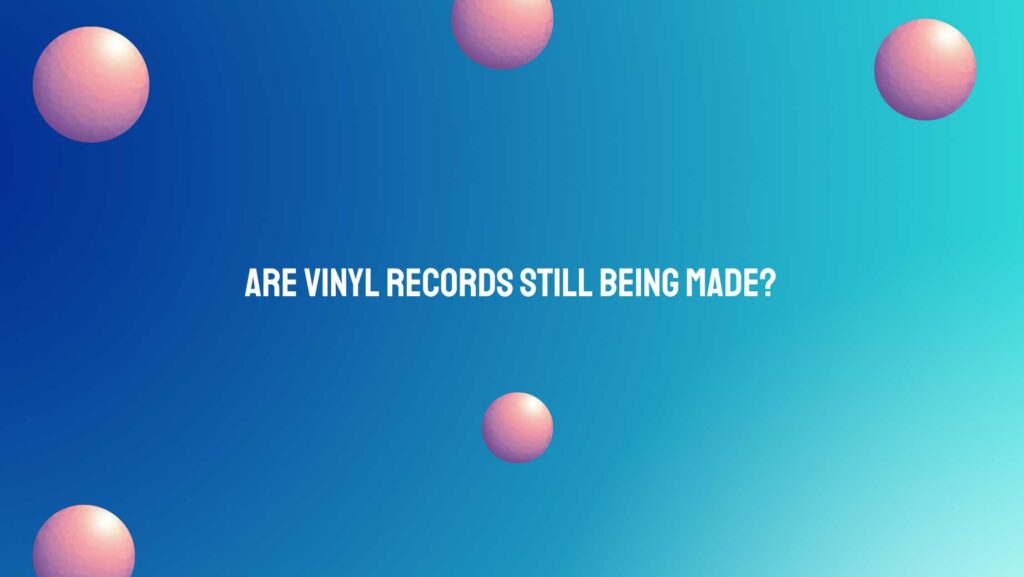In a world dominated by digital music streaming and the convenience of portable music players, it may seem counterintuitive that vinyl records, a technology that dates back over a century, are still in production. However, vinyl records have experienced a remarkable resurgence in popularity over the last few decades. In this comprehensive article, we will explore the reasons behind the vinyl revival, the current state of vinyl production, and the enduring appeal of this analog music format.
The Vinyl Revival
The resurgence of vinyl records can be attributed to a combination of factors:
1. Nostalgia:
Vinyl records hold a special place in the hearts of music enthusiasts who grew up with them. The tactile experience of handling records, the anticipation of placing the needle on the groove, and the large, visually appealing album artwork evoke a sense of nostalgia that many music lovers find irresistible.
2. Sound Quality:
Vinyl records offer a unique listening experience. Analog recordings capture a warmer, more organic sound that some audiophiles prefer over the crisp but often compressed sound of digital formats. The imperfections inherent in vinyl, such as pops and crackles, contribute to its charm and character.
3. Collectibility:
Vinyl records have inherent collectible value. Limited edition releases, colored vinyl variants, and unique packaging make vinyl a desirable medium for collectors. Many artists and record labels have embraced vinyl as a way to create special, tangible editions of their music.
4. Tangibility:
In an era where digital music is intangible, vinyl records provide a tangible connection to music. Owning a physical record offers a sense of ownership and connection that is lacking in streaming services.
5. Slow Down Culture:
The vinyl experience encourages listeners to slow down and engage with music more intentionally. Flipping records, examining album art, and actively participating in the playback process create a mindful listening experience that contrasts with the background streaming often associated with digital music.
The Current State of Vinyl Production
The resurgence of vinyl records has spurred a thriving industry in vinyl production. Here’s a look at the current state of vinyl manufacturing:
1. Vinyl Pressing Plants:
Vinyl pressing plants are essential to the production of records. These facilities are responsible for creating the physical records from vinyl pellets, mastering the audio, and pressing the grooves onto the discs. While many pressing plants shut down in the late 20th century with the rise of CDs, they have made a comeback to meet the growing demand for vinyl.
2. Independent Labels and Artists:
Independent record labels and artists have played a significant role in the vinyl revival. They recognize the appeal of vinyl to their fanbase and often release vinyl editions of their albums, sometimes in limited quantities. This trend has diversified the vinyl market, offering a wide range of musical genres and niche releases.
3. Major Labels:
Major record labels have also embraced vinyl, releasing new and reissued albums on vinyl formats. This includes classic albums from their back catalogs and contemporary releases. Iconic albums that were originally released on vinyl have been reissued, providing collectors with high-quality, remastered versions.
4. Record Store Day:
Record Store Day, an annual event that began in 2008, celebrates independent record stores and vinyl culture. On this day, exclusive vinyl releases are made available, attracting collectors and music enthusiasts to brick-and-mortar record stores. Record Store Day has become a significant event for vinyl enthusiasts worldwide.
5. Vinyl Subscription Services:
Vinyl subscription services have emerged, offering curated selections of records to subscribers each month. These services introduce subscribers to new music and provide a convenient way to build vinyl collections.
The Appeal of Vinyl Records Today
The enduring appeal of vinyl records can be attributed to several factors:
1. Aesthetic and Collectible Value:
Vinyl records are visually appealing, often featuring large album covers with intricate artwork. Limited edition releases and colored vinyl variants add to their collectibility.
2. Audiophile Quality:
Audiophiles appreciate the analog sound quality of vinyl records, which they argue offers a warmer and more authentic representation of music compared to digital formats.
3. Tangibility and Intimacy:
The physical nature of vinyl records fosters a sense of intimacy and connection with the music. The act of physically handling records and interacting with playback equipment is a ritual that enhances the listening experience.
4. Vinyl Communities:
Vinyl enthusiasts often come together in communities, both online and offline, to share their passion for records. These communities provide a sense of belonging and facilitate the exchange of knowledge and rare finds.
5. Limited Editions and Exclusives:
Vinyl’s resurgence has led to a plethora of limited edition releases, exclusive variants, and special packaging. Collectors are drawn to the unique offerings available in the vinyl format.
6. Resale Value:
Vinyl records can also appreciate in value, making them an attractive investment for collectors. Rare and sought-after records can fetch high prices on the secondary market.
Conclusion
In conclusion, vinyl records are indeed still being made, and their enduring appeal can be attributed to a combination of nostalgia, sound quality, collectibility, tangibility, and the sense of community they offer. The vinyl revival has led to a thriving industry with vinyl pressing plants, independent labels, major record companies, and a diverse range of vinyl-related events and services. As long as there are music enthusiasts who value the unique qualities of vinyl, it’s likely that vinyl records will continue to be produced and cherished for years to come. Whether you’re a seasoned collector or new to vinyl, the format’s timeless charm and cultural significance make it a fascinating and enduring medium for music consumption.


